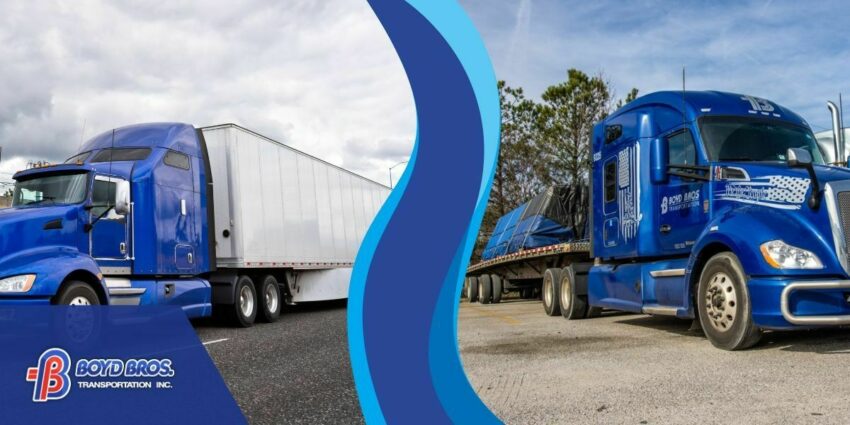
A Comprehensive Guide to Transitioning to Flatbed Trucking
Post Date - Mar 11, 2024
Are you an owner-operator considering the switch from dry vans to flatbed trailers? Successfully transitioning requires careful thought and preparation but is accessible for anyone who wants to take on the challenge. In this guide, we'll explore the essential tools, truck specifications, purchasing tips, and the overall landscape of flatbed trucking to equip you for success on this new journey.
Flatbed trucking involves transporting loads on an open, flat trailer and securing them with chains, straps, or tarps. There are a variety of trailer types that require specific preparation and handling, but with a carrier like Boyd Brothers, you won’t go without support or answers to any questions.
Differences in Flatbed vs. Dry Vans
Flatbed trucking brings distinct expectations, such as handling dirtier loads due to open trailers and predominantly loading and unloading during daylight hours. Loading differences include flatbeds being loaded from the side, offering more flexibility, while dry vans typically load from the back, potentially involving wait times for dock space. Pay differences hinge on flatbed drivers covering fewer miles but receiving slightly higher pay per mile, while dry van drivers cover more miles on average.
Benefits of Flatbed Trucking
Embracing flatbed trucking brings several advantages. Higher pay rates reflect the broader skill set and increased responsibilities. The nature of manual loading and unloading, coupled with regular inspections, offers more physical activity, providing opportunities to stay active and avoid prolonged sitting. Handling oversized cargo presents a thrilling challenge, requiring new skills and offering a variety of routes and experiences.
Truck Specifications
Ensuring your truck meets specific specifications is crucial. Proper trailer swing clearance, fifth wheel height between 47 and 50 inches, and the ability to pass DOT inspection are key considerations. Specific company specifications may vary, so it's essential to be aware of any additional requirements.
Tools for Flatbed Hauling
To navigate the world of flatbed hauling, several key tools are indispensable. The headache rack, costing between $3,000 and $5,000, serves as a secure storage space for chains, straps, binders, and other crucial securement tools. This rack is essential for safety, preventing injuries in case of a load shift. For trucks leased through Boyd, headache racks are provided.
Removable Gooseneck Sliders (RGN) are vital for hauling RGN trailers, allowing for sliding the trailer onto the fifth wheel. Beacon lights, priced at hundreds of dollars each, are mandated by the Department of Transportation (DOT) to signal oversized loads. Flag brackets, under $40 each, along with flags, are also DOT requirements for alerting other drivers about oversized loads. Additionally, oversized load banners, costing around $20 each, must be displayed if the load exceeds specific dimensions, as mandated by the DOT. Securement materials, including chains, straps, binders, tarps, and related tools, are essential for legal, secure, and tarped loads.
Investing in tools for flatbed hauling typically ranges from $5,000 to $10,000, excluding securement materials. These tools are available at local dealerships, online, trucker catalogs, and used truck equipment yards. Some companies may offer financing or discounts on tools, providing options for owner-operators.
How to be a Successful Flatbed Truck Driver
Becoming a successful flatbed truck driver involves understanding load securement procedures, such as balancing loads, inspecting equipment, and using securement tools. Responsibilities include tarping and frequent load checks. Familiarity with safety regulations, adherence to speed limits, and regular truck inspections are crucial. Focus on weight limits, flags, lights, and attention to weather conditions is paramount.
The choice between flatbed and dry van depends on personal preferences, schedule considerations, and the willingness to tackle different challenges. If you’re considering making this switch, partnering with the right carrier is paramount. Boyd Brothers is prepared to support drivers in the journey to flatbed, getting you on the road to success and supporting you the entire way. For more information about a career with Boyd, connect with us today!